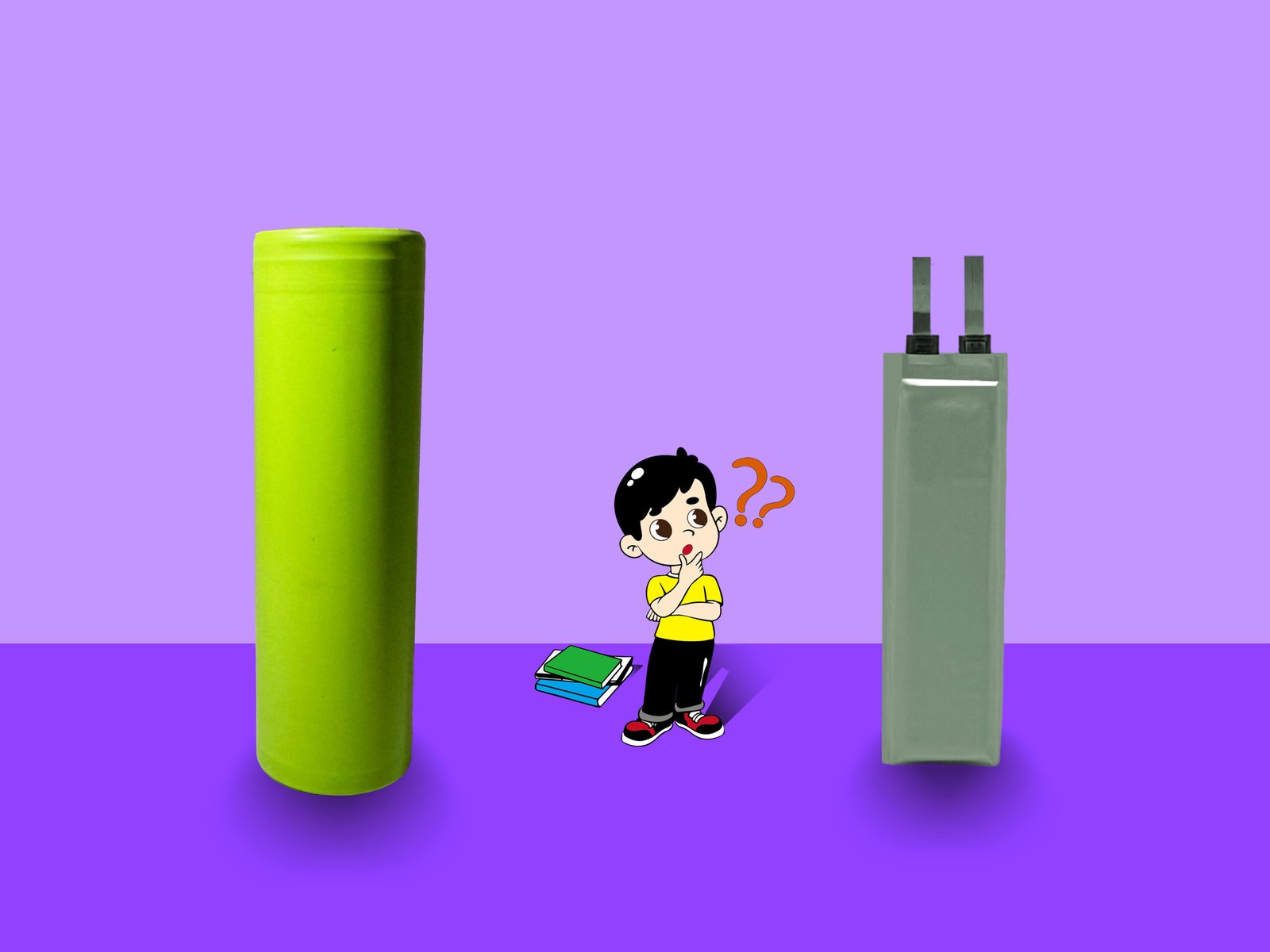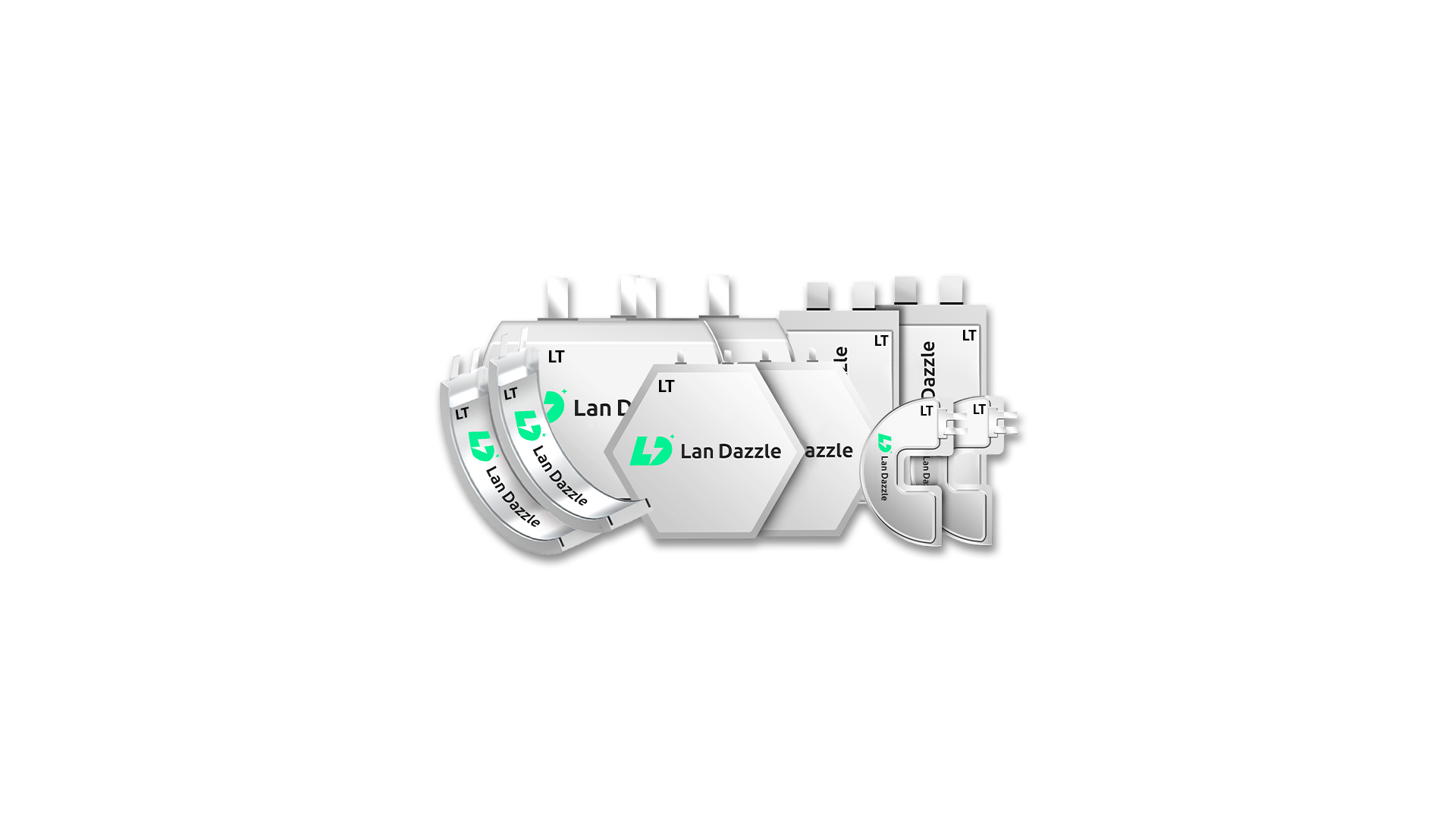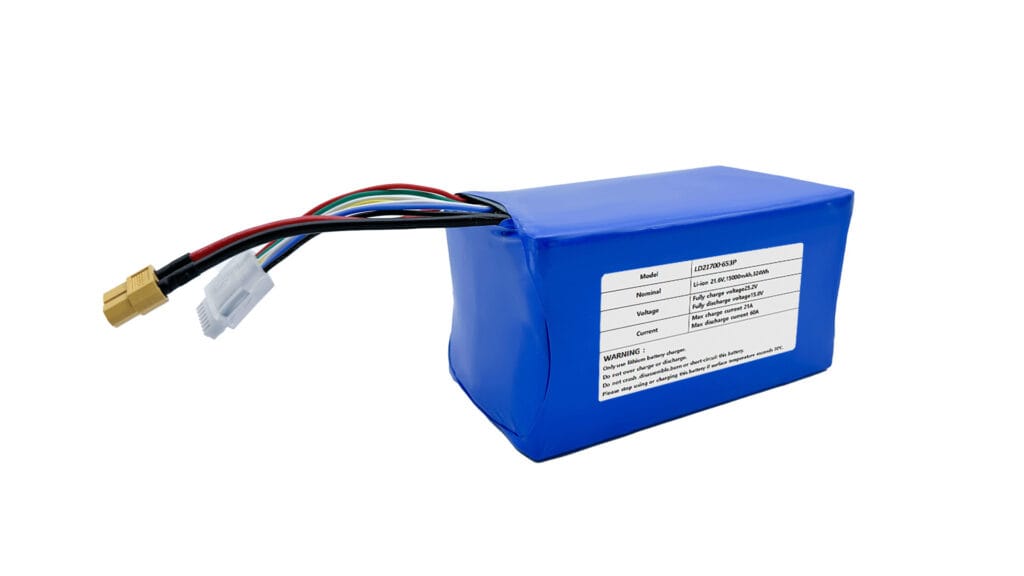Choosing the right battery technology can make or break your product performance. Selecting the wrong battery may lead to safety risks, increased costs, and reduced reliability. In today’s competitive market, understanding the differences between lithium-ion and lithium polymer battery is essential. This guide aims to provide a comprehensive framework for decision-making by comparing technical parameters, application scenarios, and cost considerations.
Key Differences Between Lithium-Ion and Lithium Polymer Batteries
When choosing between lithium-ion and lithium polymer batteries for your application, it’s essential to consider their key characteristics. These two technologies differ significantly in terms of form factor, energy density, safety, and cost. Understanding these differences will help you make an informed decision that best suits your product’s needs.
1. Energy Density
- Lithium-Ion: Lithium-ion batteries generally offer higher energy density, typically around 250 Wh/kg. This means that for the same size or weight, Li-ion batteries can store more energy, providing longer runtime in power-hungry devices.
- Lithium Polymer: Lithium polymer batteries have a slightly lower energy density, usually around 200 Wh/kg. While this makes them less energy-dense than Li-ion batteries, their main advantage lies in their form factor flexibility (more on that below).
- Impact on Applications: For applications like electric vehicles (EVs) or energy storage systems, where battery longevity and capacity are crucial, lithium-ion batteries are often the preferred choice. However, lithium polymer batteries are commonly used in devices like wearable tech, where weight and space are more critical than sheer energy density.
2. Form Factor
- Lithium-Ion: Lithium-ion batteries are typically encased in cylindrical or prismatic (rectangular) hard shells, such as the common 18650 or 21700 cells. These rigid shapes are well-suited for devices with a defined space and a need for robust protection against physical damage.
- Lithium Polymer: Lithium polymer batteries have a soft, flexible pouch design that allows for custom shapes and ultra-thin designs. This flexibility makes them ideal for applications where space is limited or a sleek, custom form factor is required, such as in smartwatches, smartphones, and wearable devices.
- Impact on Applications: For products that demand custom designs or lightweight forms, like wearable tech or drones, lithium polymer batteries are more suitable. On the other hand, lithium-ion batteries are better for applications where standard cell sizes and robust packaging are key, such as in electric vehicles or laptops.
3. Safety
- Lithium-Ion: While lithium-ion batteries are generally safe, they require strict safety mechanisms to avoid issues such as overcharging, overheating, or short-circuiting. If these conditions are not controlled, they can lead to thermal runaway and fire hazards. To mitigate this, lithium-ion batteries often come with battery management systems (BMS) that help monitor and regulate charge and temperature.
- Lithium Polymer: Lithium polymer batteries are often regarded as safer because they typically use a gel or solid-state electrolyte instead of a liquid electrolyte. This solid-state design makes them less prone to leakage or explosions under extreme conditions. Additionally, the absence of liquid electrolytes means that LiPo batteries are generally more stable when subjected to pressure or puncture.
- Impact on Applications: Safety is a critical factor in devices like medical equipment and consumer electronics. While both battery types are relatively safe with proper management, lithium polymer batteries are considered safer for wearable tech and portable medical devices because of their solid-state structure.
4. Cost
- Lithium-Ion: Lithium-ion batteries are typically less expensive than lithium polymer batteries due to their more established manufacturing processes and economies of scale. This makes Li-ion batteries an attractive choice for applications that need to keep costs low without compromising on performance.
- Lithium Polymer: Lithium polymer batteries tend to be more expensive due to the additional cost involved in customizing their form factors and the less standardized production process. The flexibility and lightweight design come at a premium price.
- Impact on Applications: For consumer electronics and budget-sensitive projects, lithium-ion batteries often represent a more cost-effective option. In contrast, for high-end, performance-oriented devices such as wearables and drones, where weight, size, and form factor are more critical, lithium polymer batteries are worth the extra investment.
5. Cycle Life
- Lithium-Ion: Lithium-ion batteries typically offer a longer cycle life (500 to 1000 charge-discharge cycles). They can endure many charge cycles before their capacity starts to degrade significantly. This makes them ideal for applications that require long-term reliability, such as electric vehicles, laptops, and renewable energy storage systems.
- Lithium Polymer: Lithium polymer batteries generally have a shorter cycle life, usually around 300 to 500 cycles. While they still offer a good lifespan for many devices, they will not last as long as lithium-ion batteries in high-demand applications.
- Impact on Applications: Lithium-ion batteries are the preferred choice for devices that undergo frequent charging cycles, such as electric vehicles or high-performance electronics. Lithium polymer batteries, with their shorter cycle life, are better suited for applications where size and weight are the primary concerns, and battery longevity is less critical.
6. Weight
- Lithium-Ion: Lithium-ion batteries are generally heavier than lithium polymer batteries due to their rigid metal casings. While they are still relatively lightweight compared to other battery technologies (such as lead-acid), their weight can be a limitation for applications where every gram counts.
- Lithium Polymer: Lithium polymer batteries are typically lighter because they use a flexible, lightweight pouch design with an aluminum-plastic laminate. This design makes them ideal for applications where weight is a critical factor.
- Impact on Applications: Lithium polymer batteries are perfect for products like drones and wearable devices where reducing weight is a priority. On the other hand, lithium-ion batteries are used in applications where weight is less of a concern and energy density is more important, such as in electric vehicles and power tools.
| Parameter | Lithium-Ion (Li-ion) | Lithium Polymer (LiPo) |
|---|---|---|
| Energy Density | Medium to High (~250 Wh/kg) | Slightly Lower (~200 Wh/kg) |
| Form Factor | Limited (Cylindrical/Rectangular hard shells) | Extremely Flexible (Ultra-thin/Custom soft pouch) |
| Safety | Requires strict overcharge/temperature control | Relatively stable due to solid/gel electrolytes |
| Cost | Lower (mature production chain) | Higher (customized manufacturing) |
| Cycle Life | Longer (500-1000 cycles) | Shorter (300-500 cycles) |
| Weight | Heavier (due to metal casing) | Lighter (using aluminum-plastic laminate) |
| Temperature Range | Wide (-20°C ~ 60°C) | More sensitive (avoid extreme temperatures) |
How to Choose Between Lithium-Ion and Lithium Polymer
Selecting the right battery involves several systematic steps. Here’s a framework to help you choose the ideal lithium battery for your specific application:
Step 1: Define Your Application’s Core Requirements
- Design Constraints: Does your product require an ultra-thin or custom shape design? For example, wearable devices may benefit from the flexible form factor of lithium polymer batteries.
- Performance Needs: Are high energy density and long cycle life critical? Applications like energy storage systems typically favor lithium-ion batteries.
- Operating Environment: Consider temperature ranges and safety concerns. Industrial equipment operating in extreme environments might lean towards lithium-ion due to their wider temperature tolerance.
Step 2: Prioritize Your Needs
Create a priority list based on your application:
- Cost vs. Performance: For budget-sensitive applications, the lower cost of lithium-ion batteries can be advantageous.
- Battery Safety: For products that operate in demanding conditions, prioritize batteries with superior safety features.
- Form Factor Flexibility: If design aesthetics and shape customization are paramount, lithium polymer batteries may be the better option.
Step 3: Use the Elimination Process
By comparing the technical parameters, you can eliminate options that do not meet your critical requirements:
- For cost-sensitive projects with minimal design constraints, eliminate lithium polymer batteries.
- For applications requiring custom shapes and lightweight design, consider excluding lithium-ion batteries.
Step 4: Validate Through Testing
Before full-scale implementation, conduct small-batch tests:
- Perform high discharge rate tests.
- Carry out high-temperature aging experiments.
- Ensure that the selected battery meets all safety and performance benchmarks.
Case Studies
In order to make a well-informed decision about choosing between lithium-ion and lithium polymer batteries, it is important to consider how different industries and applications utilize these technologies. Below are several detailed case studies that highlight how companies can make decisions based on specific needs and performance requirements.
Consumer Electronics (Drones)
- Application Overview: Drones are a perfect example of consumer electronics that require a balance of light weight, high power output, and compact design.
- Requirements:
- Lightweight design to ensure longer flight times.
- High discharge rates for powerful motors and rapid acceleration.
- Compact form factor to fit within the constrained body of the drone.
- Solution: Lithium-ion battery packs are ideal for drones due to their high energy density, which allows drones to achieve longer flight times with a reliable power output. Lithium-ion packs provide a stable power source for high-discharge needs while offering long cycle life and a robust form factor. Although lithium polymer batteries are lighter, lithium-ion packs offer superior performance in high-demand applications like drones, where power consistency is crucial.
- Outcome: Drones powered by lithium-ion battery packs benefit from reliable, long-lasting performance, longer flight durations, and safer operation over many charge cycles.
Medical Devices (Portable Monitors)
- Application Overview: Medical devices such as portable monitors, insulin pumps, and patient monitoring systems require batteries that can provide reliable performance, long life, and high safety.
- Requirements:
- Safety is the number one priority due to the critical nature of the devices.
- Long battery life to ensure continuous monitoring without frequent recharges.
- Reliability and stability to prevent failures during operations.
- Solution: Lithium polymer (LiPo) batteries are recommended for medical devices due to their safer operation and customizable form factor. The solid or gel electrolyte used in LiPo batteries enhances safety, which is crucial in medical environments where failure or leakage can have serious consequences. Additionally, the ability to create compact, lightweight designs is ideal for portable medical devices.
- Outcome: Medical devices powered by lithium polymer batteries achieve optimal safety and reliable long-term performance, while the compact design ensures the devices remain lightweight and easy to use in medical settings.
Smart Wearables (Smartwatches)
- Application Overview: Smartwatches, fitness trackers, and other wearable devices require batteries that can fit in compact spaces while delivering enough power to support various functions such as GPS tracking, heart rate monitoring, and notifications.
- Requirements:
- Ultra-thin design to fit in the small, slim body of the watch.
- Custom shapes to optimize space.
- Moderate power requirements to support continuous use without heavy weight.
- Solution: Lithium polymer batteries are the ideal choice for wearable devices due to their flexibility in design. These batteries can be manufactured in a variety of shapes, making them perfect for the compact and often irregular designs of wearable technology. Additionally, they are lighter, which is an essential feature for ensuring comfort for the user during prolonged wear.
- Outcome: Wearable devices powered by lithium polymer batteries maintain a sleek, slim profile while delivering sufficient power for day-to-day tasks. This battery type helps manufacturers achieve both the aesthetic and functional goals of their products.
Power Tools (Cordless Drills, Saws)
- Application Overview: Cordless power tools are used in both residential and industrial settings and require batteries that provide high power output and can withstand frequent charging cycles.
- Requirements:
- High discharge rates to power heavy-duty motors.
- Long-lasting power for extended use in demanding environments.
- Cost-effectiveness due to the competitive pricing of power tools.
- Solution: Lithium-ion batteries are typically used in power tools due to their high energy density and long cycle life. The long cycle life ensures that the batteries can withstand frequent recharges, while the high discharge rates provide the power necessary to run motors at optimal levels.
- Outcome: Power tools powered by lithium-ion batteries can operate for longer periods without overheating or losing power, providing better overall performance. These batteries also contribute to the reduced weight of the tools, enhancing user comfort and efficiency.
IoT Devices (Internet of Things)
- Application Overview: IoT devices, ranging from smart home products to environmental sensors, require small, compact power sources that can last a long time without frequent charging.
- Requirements:
- Compact size to fit within small, enclosed IoT devices.
- Extended battery life to minimize maintenance and downtime.
- Cost-effectiveness as these devices are often deployed in large quantities.
- Solution: Lithium polymer batteries are increasingly being used in IoT devices due to their small size, flexibility, and ability to be customized to fit within the compact form factors of IoT products. Lithium polymer batteries provide a good balance of energy density and lightweight performance, which is essential for small devices that need to be powered for extended periods.
- Outcome: IoT devices equipped with lithium polymer batteries enjoy extended usage periods between charges, contributing to a more reliable and low-maintenance product. The customizability of lithium polymer batteries also allows for innovative designs that maximize space utilization and performance.
Future Trends & Hybrid Solutions
The future of lithium battery technology is marked by innovation and integration:
- Technology Integration: Emerging solid-state lithium polymer batteries promise to enhance both energy density and safety.
- Market Trends: With the rise of the Internet of Things (IoT), lithium polymer batteries are gaining traction in custom wearable and portable electronics, while lithium-ion batteries continue to dominate in electric vehicles and large-scale energy storage.
- Hybrid Solutions: Some applications may benefit from hybrid configurations that combine the strengths of both battery types to balance performance, cost, and safety.
Conclusion
In summary, there is no “one-size-fits-all” battery—there is only the most appropriate lithium battery for your needs. By carefully assessing your application’s requirements, prioritizing key parameters such as battery safety and energy density, and validating through rigorous testing, you can make an informed decision between lithium-ion and lithium polymer batteries. For custom solutions and further inquiries, please contact our expert team.
Custom Lithium Battery Solutions from Lan Dazzle
At Lan Dazzle, we specialize in providing custom lithium battery solutions tailored to your unique needs. Whether you require lithium-ion batteries for high-performance applications or lithium polymer batteries for ultra-thin, flexible designs, our team of experts can help you create the perfect battery for your product.
With a focus on innovation, safety, and quality, we offer custom solutions for a variety of industries, including drones, medical devices, wearable tech, and more. For more information or to get started with your custom lithium battery project, contact us today at info@landazzle.com or visit our website. Let Lan Dazzle power your innovation with reliable, cutting-edge lithium battery technology.





